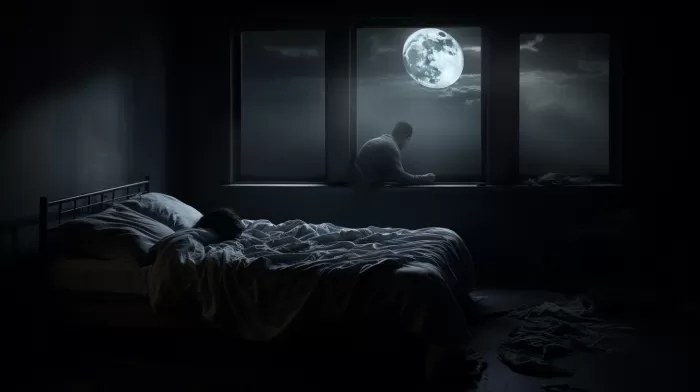Imagine this: You’re lying in bed, eyes wide open, tossing and turning, unable to sleep. You think to yourself, “It’s just another rough night; I’ll eventually drift off and everything will be fine.” What you don’t realize is that this seemingly “harmless” insomnia could affect not only your quality of life but also potentially double your risk of dying suddenly within the next decade.
Insomnia and Fatal Accidents: A Dangerous Connection
Researchers from the Norwegian University of Science in Technology in Trondheim, Norway, conducted a study that found insomnia to be a significant factor in many deaths resulting from car crashes and other fatal injuries. The results indicate that the more difficulty you experience with sleeping, the greater your chances of dying in an accident.
Data collected during the decade-long study revealed that insomniacs who had trouble falling asleep were the most likely to be killed in accidents. However, people suffering from other sleep disruptions, such as waking up in the middle of the night or feeling excessively alert too early in the morning, were also at risk. Those who exhibited all three insomnia symptoms were 2.8 times more likely to die from a fatal injury than individuals who sleep soundly.
According to researcher Lars Laugsand, “Our results suggest that a large proportion of unintentional fatal injuries and fatal motor vehicle injuries could have been prevented in the absence of insomnia.” He adds, “Increasing public health awareness about insomnia and identifying and treating people with insomnia may be essential in preventing unintentional fatal injuries.”
A Growing Public Health Concern
Alarming statistics from the Centers for Disease Control and Prevention (CDC) reveal that more than 126,000 unintentional injury deaths occur every year in the U.S., making it the fifth leading cause of death. Additionally, the nation records over 33,000 motor vehicle traffic fatalities and over 27,000 unintentional deaths from falls annually.
Given the prevalence of these types of accidents and their potential link to insomnia, it’s clear that raising awareness about the importance of healthy sleep is a crucial aspect of public health. As American Academy of Sleep Medicine President Dr. Timothy Morgenthaler, a national spokesperson for the Healthy Sleep Project, states, “Sleep is a necessity, not a luxury, and the promotion of healthy sleep should be a fundamental public health priority.”
Tips for Achieving Better Sleep and Reducing Risk
So, how can you improve your sleep quality and reduce your risk of being involved in a fatal accident? Here are a few tips for promoting healthy sleep habits:
- Stick to a regular sleep schedule: Aim to go to bed and wake up at the same time every day, even on weekends, to help regulate your body’s internal clock.
-
Create a sleep-friendly environment: Keep your bedroom dark, cool, and quiet, and invest in a comfortable mattress and pillow. Consider using blackout curtains, white noise machines, or earplugs to minimize disturbances.
-
Limit exposure to screens before bedtime: The blue light emitted by phones, tablets, and computers can interfere with your body’s production of melatonin, a hormone that helps regulate sleep. To prevent this, try to avoid using these devices for at least an hour before bedtime.
-
Exercise regularly: Regular physical activity can help you fall asleep faster and enjoy deeper sleep, but try not to work out close to bedtime, as this may have the opposite effect.
-
Limit caffeine and alcohol consumption: Both substances can interfere with the quality of your sleep. Caffeine can lead to difficulty falling asleep, while alcohol may cause you to wake up during the night.
By incorporating these tips into your daily routine, you can promote healthier sleep patterns and potentially reduce your risk of being involved in a life-threatening accident. A night of restful sleep is more than just a luxury — it’s an essential aspect of overall well-being and safety.



